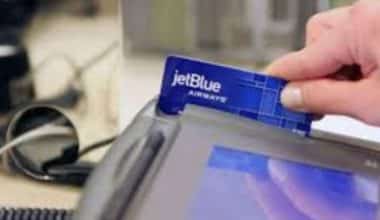Telematics, in its broadest definition, is the intersection of two sciences: telecommunications, a field of technology that includes phone lines and cables, and informatics, which includes computer systems. The phrase is now often used to refer to the telematics system used in business fleet vehicles. In this guide, we will discuss all about the telematics system, including the vehicle telematics of a truck, the Ford motor, and other possible fleet. Let’s get to it.
What is Telematics System?
Telematics, often known as telematics systems, is the integration of telecommunications and information processing. Telematics, which is derived from the French word télématique, gained popularity in the United States in the 1970s and is now often used to refer to the junction of information technology and telecommunications. With the growth of the internet and an increase in the number of telecommunications networks that can transport data to offices in real-time for many purposes, including fleet or truck management, telematics systems have taken off more recently.
What is the Vehicle Telematics System?
Telematics system is often used interchangeably with vehicle telematics or fleet telematics in the automotive or fleet industries. The term “vehicle telematics system” refers to onboard communication services and applications in vehicles that connect with one another via GPS receivers and other telematics equipment. Vehicle tracking is the most prevalent application. This is accomplished by integrating a GPS system with onboard diagnostics, which are normally used to map the exact location of a vehicle as well as its speed.
The vehicle telematics system is becoming increasingly popular as a result of increased corporate demand and regulatory obligations. Telematics system data is used by fleet or truck not only to keep compliant with the ELD mandate but also to run their operations more effectively.
How Does Telematics System Work?
A telematics system, at its core, consists of a vehicle tracking device mounted in a vehicle that permits the sending, receiving, and storing of telemetry data. It links to a SIM card via the vehicle’s onboard diagnostics (ODBII) or CAN-BUS connector, and an inbuilt modem allows communication over a wireless network.
The gadget captures GPS data as well as a variety of other vehicle-specific data and transmits it to a centralized server through GPRS (General Packet Radio Service), 4G mobile data, cellular network, or satellite connection. The server analyses the data and displays it to end users through secure websites and apps tailored for smartphones and tablets.
Location, speed, idling time, severe acceleration or braking, fuel consumption, vehicle issues, and other information can be gathered via telematics. When evaluated for specific events and patterns, this data can provide detailed insights across a whole fleet.
What is the Advantage of Telematics?
Fleet or truck managers can profit from incorporating a vehicle telematics system into their fleets in a variety of ways. The following are at the top of the list:
#1. Visibility
Vehicle tracking provides enterprises with visibility into the locations of their cars by monitoring a vehicle’s movement or location using a GPS system. This is one of the most prevalent uses of car telematics system, and it is especially valuable for businesses that need to keep track of a truck or fleet of vehicles. The same capability can be used to track both powered and unpowered assets, such as trailers or reefers.
#2. Maintenance.
The majority of vehicle telematics systems connect directly to a vehicle’s diagnostic port. This automatically collects engine data, such as fuel usage, coolant temperature, and engine load, enabling easy access by fleet management teams. This is also an excellent method for fleet managers to establish a regular vehicle maintenance schedule. Vehicle telematics providers can detect vehicle issues, allowing fleet managers to know when to bring a vehicle in for service.
#3. Security
Vehicle telematics systems can be a wonderful approach to acquiring insight into driving habits because they monitor and gather data about vehicles. To help boost driver safety on the road, fleet managers can also construct training programs or individual coaching sessions based on telemetry data, such as forceful braking or acceleration.
Insurance companies are also beginning to employ telematics data to precisely identify risk factors and adjust insurance prices as needed.
#4. Cost savings
Telematics may effectively lower fleet fuel costs by recognizing trends in driver behavior and route performance—insights that can lead to significant increases in fuel efficiency.It can be difficult to advise drivers on fuel efficiency if you don’t have visibility into how they’re doing on a daily basis. Certain telematics systems can also communicate in real time between fleet management and drivers via messages, allowing drivers to easily reroute in the event of heavy traffic or another unexpected road delay.
#5. Compliance
Telematics solutions, which electronically and automatically measure vehicle drive-time, can make it easier to maintain ELD compliance. Fleet managers can employ telematics systems to track duty status records, and some providers, such as Samsara, can even automate workflows related to amending, certifying, and annotating Hours of Service logs.
Top Telematics Companies for Vehicles
As you may expect, these rankings create a list of the top telematics firms. Each of the organizations we’ll look at today has notable telematics technology. Continue reading to find out more:
#1. Geotab
With 2.1 million business fleet subscribers, Geotab dominates the telematics market. “Processing billions of data points per day, Geotab leverages data analytics and machine learning to help customers improve productivity, optimize fleets through reduced fuel consumption, enhance driver safety, and achieve regulatory compliance,” according to the Geotab website. Geotab has recently increased its connections by partnering with OEMs.
#2. Verizon Connect
Verizon Connect is the number two telematics provider according to API Research. More than 2 million subscribers use the Verizon Connect telematics platform. However, you cannot rely entirely on name recognition to gain that many customers.
Indeed, Verizon Connect provides the full range of telematics functions. GPS fleet tracking, maintenance alerts, ELD compliance, performance reporting, and vehicle diagnostics are all available. Most clients will find the list to be comprehensive.
However, API put Verizon top in terms of innovation, based on a recently integrated video solution. The Verizon video solution employs artificial intelligence (AI) and machine learning to assist with incident classification and driver rating analysis. These adjustments will increase reporting accuracy and safety.
#3. Ford Pro™ Telematics
With the Ford Pro telematics system, you will get a real-time window into your fleet and help with optimizing your business. Ford Pro™ Telematics system is software that powers productivity. Compatible with any make or model of gas or electric vehicle, Ford Pro™ Telematics systemprovides real-time OEM-grade data on a convenient dashboard. Plus, there’s no plug-in device needed on modem-equipped Ford commercial vehicles that are 2020 model year or newer.
Ford Pro™ Telematics system will help Help increase the efficiency of your business. Analyze fuel consumption or EV range, idling time, and more. Also, the Ford Pro™ Telematics system keeps an eye on all the roads and monitors vehicles and driver habits with live GPS, geofencing, and more. Ford Pro telematics system will as well send alerts about warning lights, oil life, and recalls. Plus, you can schedule service right in the Ford Pro™ Telematics system app.
#4. Trimble
Trimble is the third among telematics providers by API Research. The company obtained that rating by providing a diverse range of solutions and holding a sizable market share. Trimble is chosen as Kenworth and Peterbilt’s onboard telematics provider in 2015. As a result, clients interested in OEM factory-installed telematics can click that box.
Trimble also has a lot of brand recognition, having been a fixture in logistics and telematics for many years. However, Trimble’s latest cooperation with Kenworth’s Trucktech+ demonstrates that the corporation isn’t resting on its laurels when it comes to truck maintenance. Kenworth is pushing down on driver connectivity in addition to all of the basic telematics options.
#5. Platform Science
As previously stated, businesses prefer factory-fitted, on-board, OEM-installed telematics devices. Simply put, there is more confidence and dependability that way. Platform Science is attempting to capitalize on this trend. Many of the most recent Daimler-brand tractors are equipped with the company’s goods. Platform Science approaches telematics collaboratively.
Platform Science, according to its website, provides an “open-edge platform for telematics service providers (TSPs), apps, and devices.” This Platform Science, in other words, promotes collaboration with other software companies that want to interface with its platform. The outcomes are amazing.
#6. Samsara
Samsara is a well-known name in telematics. In the transportation business, it bills itself as “technology that goes beyond GPS tracking.” Geofencing, real-time position tracking, and complex routing capabilities such as traffic congestion avoidance are among Samsara’s telematic technologies.
Samsara’s telematics technology promises to assist decision-makers in tracking fuel usage, fleet diagnostics, and vehicle maintenance plans. Samsara also provides gadgets to assist drivers. These are features that streamline and automate a driver’s workflow through a combination of digitalization and paperless workflow.
How can my Fleet Use Telematics Systems?
Telematics solutions can be integrated with current applications and systems to provide a wide range of use cases for fleets of various sizes, such as:
#1. Vehicle tracking
GPS satellites and receivers, GPRS networks, and cloud computing can all be used to track vehicles. A GPS receiver collects data from GPS satellites and processes it so that it can be used by applications such as driver GPS navigation systems. It also sends that data through GPRS to web servers used by office employees, where it can be utilized to dispatch the nearest driver to a new assignment.
#2. Trailer and asset tracking
GPS trackers can be attached to trailers and other non-motorized assets to guarantee they don’t go missing, and they can also be used to lead drivers directly to stationary trailers. When unhitching a trailer, drivers can mark areas on their GPS unit, and those coordinates can be readily passed on, allowing them to route directly to the trailer. The system can also be configured to send an instant notification to a manager’s mobile device if a trailer or equipment is moved without authority.
#3. Maintenance improvements
Fleet telematics can help enhance vehicle maintenance and asset lifecycle management by recording hours-of-use records and scheduling preventative maintenance, as well as keeping track of warranty recovery, engine hour tracking, and service records tracking.
#4. Safety tracking
Fleet telematics can be used by managers to monitor vehicle speed and location, as well as hard-driving events and seat belt use. Telematics creates a digital blueprint of every aspect of a vehicle’s operation, assisting fleet management in determining where improvements in accident prevention measures and driver safety standards can be implemented.
#5. Insurance risk assessment
Telematics is put into use by insurance firms to monitor driving behavior, allowing them to precisely evaluate risk factors and modify insurance costs accordingly. Telematics devices can also report when a vehicle is operated outside of a predefined area, known as a geofence.
What is the Difference Between GPS and Telematics?
GPS tracking data is included with the other data that telematics systems send to the cloud to be accessible by home office computer systems. The telematics application converts data into useful information, which is displayed on a dashboard in the dispatcher’s office. GPS pinpoints the location of your automobiles.
What is an Example of Telematics?
Telematics systems, for example, can allow shipping companies to assess how much time vehicles spend idle, or car insurance companies to give lower premiums to safe drivers. Other industries, such as car-sharing, can benefit from telematics.
What is a Telematics Device for Car?
A telematics device is a gadget that captures information about your driving habits, such as how fast you drive, how hard you brake, and how far you travel. It’s already in your automobile.
Is Telematics Hardware or Software?
Telematics is a combination of technology and software that gives real-time information about the state of a fleet.
What is Another Word for Telematics?
Telematics, often known as fleet tracking or GPS vehicle monitoring, is now a necessary management tool for many commercial and government fleets.
How many Vehicles have Telematics?
In 2020, there will be around 130 million embedded automobile OEM telematics modules in operation worldwide. The installed base of embedded auto OEM telematics modules is expected to reach 375 million by 2026.
Conclusion
As new applications are created to make use of contemporary GPS units and the ubiquitous use of mobile devices, telematics is primed for exponential growth. More fleets are understanding the importance of fleet activity monitoring in order to minimize expenses, promote productivity, improve accountability, and ensure full compliance with government requirements.
- 10 BEST FLEET MANAGEMENT SOFTWARE IN 2023
- GPS FLEET TRACKING: Best Fleet Gps Tracking Systems 2023
- WHAT IS TELEMATICS: Definition, Benefit & How It Works
- VERIZON BLACK FRIDAY AND CYBER MONDAY TECH DEALS IN 2023
- MANUFACTURING EXECUTION SYSTEM: Meaning, Example, Software, Courses & Tutorial






